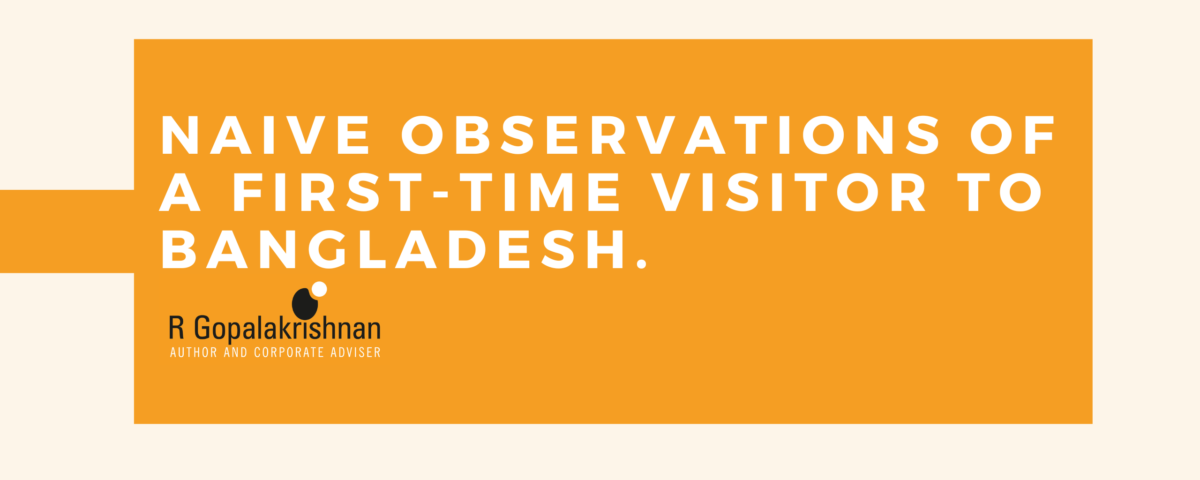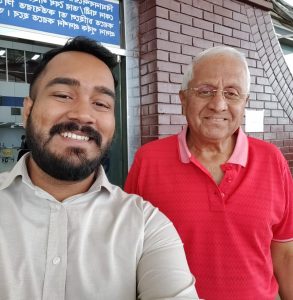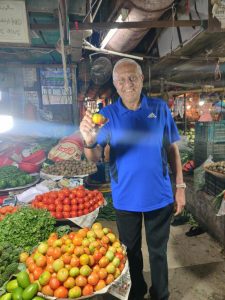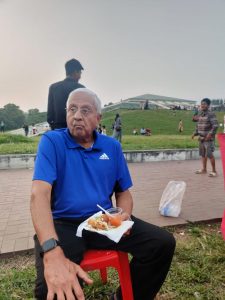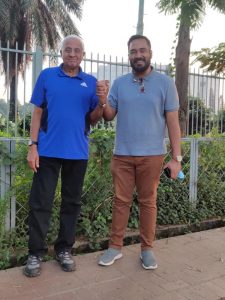NAIVE OBSERVATIONS OF A FIRST-TIME VISITOR TO BANGLADESH by R Gopalakrishnan
Through many decades of business travel, I became a somewhat curious traveler, though the curiosity was a specific one—a curiosity, which was influenced by focus on business or on family, depending on the trip. Recently I spent four days in Dhaka (earlier Dacca), when my curiosity was general. There is a great difference between general curiosity and specific curiosity. Why, in the first place, a general curiosity about Dhaka, of all the places in the world?
Well, I was born in Calcutta during the tumultuous times when Lord Wavell was ruling–or trying to rule–undivided India, and the ‘prime minister’ of undivided Bengal was Sir Khwaja Nazimuddin, followed by Husein Shaheed Suhrawardy. The latter was from my school, except that he was fifty-five years senior to me!! I grew up in Kolkata.
Calcutta and Dacca were sorts of twin Bengali cities. Growing up in an environment of Tamil at home-Bengali outside multi-culture, I often wondered about ‘the other side’. When I was a young manager at Hindustan Lever, the Swadhin Bangla movement unraveled in 1971. Hence the long-standing curiosity and interest in Dhaka. In my imagination, I felt a juvenile connection with the city. That is acceptable for a greying and ageing retiree!
Only after I arrived, I realized that Sri Gopala was the dynastic founder of the Buddhist Pala dynasty, which ruled Bengal around 750 CE. The silly thought that a second Gopala was visiting strengthened my imaginary bonds. Quite silly, but being occasionally silly is part of curiosity, isn’t it?
Luckily, I was able to speak in Bengali—at the five-star hotel, at Songsod Bhavan (Parliament), at the Sobzi Bazaar, with the poochkawala, with the jhal moori vendor, and the server in the Mishtana Bhandar. Having left Bengal over half a century ago, initially, I was a bit hesitant about the fluency of my Bengali, but was greatly encouraged by the following energizing encounter with Chef Shafiqul Ananda.
“Boloon, kee khaben?” he enquired with a smile. I rattled off my childhood favorites—loochi alurdom, begoon bhaja, and aloo poshto. “Oi gulu thak, maachey kee khaben?” Sharif persisted. When I declined with an announcement of my vegetarianism, he seemed dumb founded. He cocked his head at an angle and stared at me “Kee, apni maach khaben naa? Ekta kotha boloon. Apni to Bangali nei, ota to bhoja jaache apnar boli theke. Kintu, apni kay?” His face lighted up like a 1000-Watt bulb when he learnt my antecedents. With the typical Bengali exclamation, “Kee aschorjo!” he showed recognition of who I was. He did not leave me writhing in any embarrassment, he announced in a very motivating tone, “Kintu, apnar Bangla ta na, khoob mishto o sposhto, shunleyi bhoja jai je apni Kolkatar log.” That settled my hesitation in speaking the local language After that, I was in full flow. For example, it so happens that in Tamil, Dacca, the city, Taka, the currency, and Dhaka, the word for hidden, are all written the same way.
During my walk, I found shoeshine boy, Robi Das, with his handwritten name board and a cell phone number. “Why the cell phone number?” I enquired. He beamed at me and said “Aami baadi te delivery kori, ek motooner Amazon shoeshine.” Wow, that is some entrepreneurship!
I had been warned that Dhaka Bengali is quite different and that I may have difficulty following their manner of speaking. Their accents were different, but not difficult enough to follow. They would say Bees when I would say Koori for twenty. They would refer to elder brother/sister as Bhai/Apu, not the Da/Di appendage that I was used to. The vegetable market was Sobzi, not Tarkari. Yes for sure, would be Aboshyo rather than Nischoy. Women wear the saree, unlike in Pakistan, where sarees became rare after being discouraged during some earlier period.
The conference where I was speaking—Bangla Brand Forum—was well attended. The theme was a grandiose jaw breaker—how to develop a humane, transformational, collaborative, sustainable, and extraordinary Bangladesh by 2040!!
I got a great insight into the economy, of some of which I was unaware. Bangladesh is stated to be the second largest exporter of garments in the world. Second largest? Could India have been double Bangladesh instead of being, as India is today, half of Bangladesh in world garments exports? Garment exports account for 12% of GDP, an approximately equal share as agriculture and inward remittances! My image of Bangladesh was of being ‘hothobhaga’ (unfortunate)—always flooded after hurricanes and with frequent fires in garment factories. The good news is that they have moved on.
Of the top ten, certified ‘green’ garment factories in the world, seven are from Bangladesh. The road network is so good that you can reach from anywhere to anywhere in six hours. Rural and urban are, of course, distinct, but connectivity is merging them, a bit like our own Kerala.
Their software is tiny. However, the speaker gave his clarion call with stirring words. “Do you know that six Indian companies account for 80% of India’s software exports? That indicates how their strength can become their weakness,” he thundered. With such concentration in Indian software, he exhorted that Bangladesh needs a different approach to rapidly developing software exports. Their learned economics/management academic announced, ”Our per capita income in Bangladesh is at the same level as India, what does it take to significantly overtake India and become the first middle income country from South Asia?” Soul-stirring calls, a la Nike, to ‘Just Do It.’ The spirit, at least in the conference, was very electric.
Good luck to Bangladesh–sab ke saath, sabka vikas.

